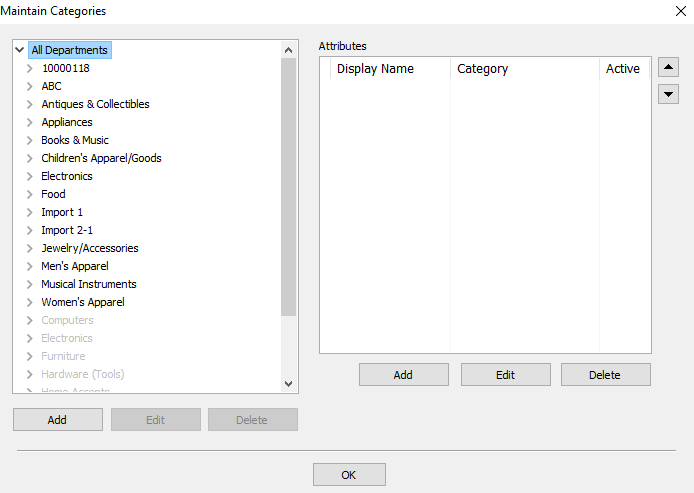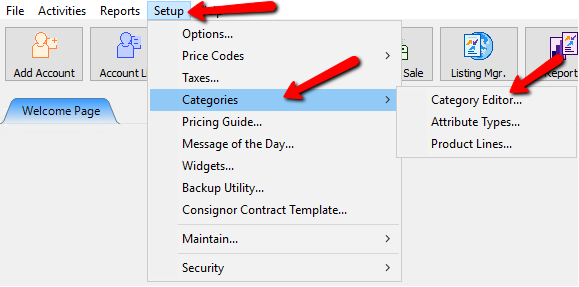Category Editor
All items entered must have a Category assigned to them. In addition to managing Categories, the Category Editor controls a
number of key functions in Liberty.

Use The Category Editor To
●Manage Categories.
○Add, Change, and Delete Categories.
○Make Categories Active or Inactive. Categories cannot be used.
○Make Categories Visible or Invisible in the Select Category dialog in the Item Entry Window.
○Assign Categories to Product Lines (which assigns a Tax Code to each Category as a result.)
○Assign a Default Weight to items that are entered into a Category.
●Manage Product Lines.
○Add, Change, and Delete Product Lines.
○Assign Tax Codes to Product Lines.
●Manage Attributes.
○Add, change, and delete Attribute Types and Attribute Values.
○Determine which Attributes are used with which Categories.
○Assign the order of Attributes as they appear in the Item Entry Window.
○Make Attributes Active or Inactive.
○Determine the Display Name of Attribute.
○Choose whether an Attribute is included in an Item's Title.
○Specify whether an Attribute is a Size, Brand, or Color.
To View The Category Editor
Click on Setup > Categories > Category Editor.
Definitions of Terms Used In The Category Editor
●Categories : Category consists of three levels: Category 1 > Category 2 > Category 3. You can see the Category Structure displayed by viewing the Category Editor.
●Level 1 Category : The top level Category.
●Level 2 Category : The middle Level Category.
●Level 3 Category : The lowest and most specific Category level.
●Active and Visible : Any Category set to Active and Visible indicates that it will be active and able to be used during item entry.
●Active and Not Visible : Any Category set to Active and Not Visible indicates that it will be active under Category Editor, but not able to be used during item entry.
●Inactive : Any Category set to Inactive indicates that it cannot be used during item entry.
●Attributes : A characteristic or feature which helps describe merchandise. For instance, color and fabric help describe clothing.
●Attribute Kind : A characteristic that represents the Attribute. For instance, Size is attribute kind “Size”.
●Default Value: This is used to set the default attribute value for the attribute that is associated with the category.
Note: Default Values for attributes can be extremely useful for certain attributes (Condition, Gender, or website specific attributes), but shouldn't be used for highly variable attributes such as Brand, Size, or Color.
●Cat Name : Specifies the name of the Category.
●Product Line : A group of Categories. Product Lines are used to assign Tax Codes and for reporting purposes.
●Use In Title : This option allows the attribute Display Name to print on tags.
